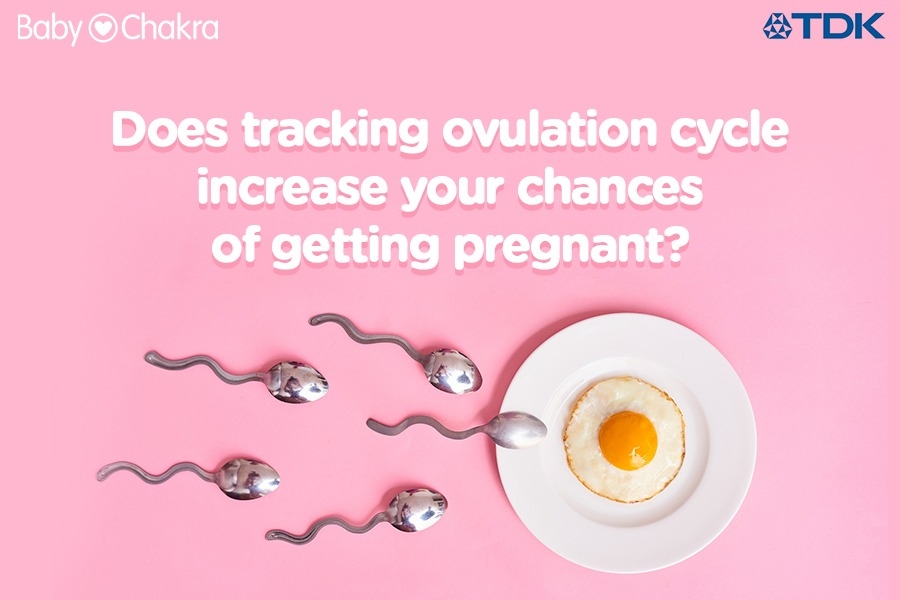
Why Tracking Ovulation Is Important
4 Jan 2019 | 5 min Read
Priyanka chhabria
Author | 48 Articles
What is ovulation?
Ovulation is a part of the menstrual cycle. It occurs when an egg/ ova releases from your ovary. It is this point of your cycle when you have chances of getting pregnant. So if you want to get pregnant or avoid pregnancy, it’s your ovulation cycle you should be aware of.
Every month ovary releases an egg. Generally, the menstrual cycle is of 28 days. So according to this ovulation starts on the 14th day. But as menstrual cycle varies for different women, ovulation occurs in the four days before or four days after your cycle midpoint.
Once ovulation ends, the luteal phase starts. If pregnancy occurs during this phase, the fertilized egg from fallopian tubes is implanted in uterus and hormones will keep the lining from shedding with a menstrual period. Otherwise, a flow will start around day 28 of the cycle, beginning the next cycle.
So tracking ovulation cycle is one to the key factors to keep a track of in both cases, which are planning to get pregnant or avoiding it.
Why track the cycle?
Tracking the ovulation cycle is important due to the following reasons:
It keeps you on track about your ‘fertile window’. The period of time in the female fertility cycle during which a woman is able to get pregnant — this typically includes the day she ovulates and the five days preceding ovulation. This is the best time to have intercourse if you’re trying to conceive.
Many women have fluctuations in the period cycle. Charting down ovulation cycle helps to know the right time of the month to conceive. Thus increases the chances of getting pregnant.
Most importantly if there is major fluctuation in the cycle every month. You are likely to have some internal issue. So here tracking ovulation cycle helps you to detect fertility problems. Once detected they can be treated at an early stage.
When you are not able to get pregnant, the doctor has to take in count many possible reasons for same. But if you provide your ovulation data to the doctor, he/ she can narrow down the number of things that might be wrong. So helps you and the doctor to address the problem sooner.
It helps you get to know your body closely. Like when you see shorter ovulation cycle or stagnant basal body temperature you may be pregnant or after the age of 40, it means you are approaching menopause. Fluctuations also indicate a hormonal imbalance. So you get knowledge about your body by tracking the ovulation cycle.
By monitoring it, you can know about your luteal phase (phase between the day you ovulate and your next period). Although the normal length of this phase is 12 to 16 days, for some women it is much shorter. If your luteal phase is shorter than this, you will need drug therapy to increase it before you can successfully get pregnant.
Even ectopic pregnancy can be identified if you track regularly.
If your menstrual cycles are shorter than 25 days or longer than 35 days in length, monitoring helps as short or long menstrual cycles are strongly associated with ovulation, and may suggest an underlying medical condition or hormonal imbalance.
To sum up it is important to track ovulation cycle for general health awareness and knowledge about the body.
Check your Fertile Days on BabyChakra’s Ovulation calculator.
Signs of ovulation:
One of the best signs indicating that ovulation is taking place is if there are any changes in your vagina’s mucus. If you notice that your vagina’s mucus is clear, slippery and has the texture of an egg white, it’s a sign you are ovulating.
Light spotting
Sore or tender breasts
Mild pelvic or lower abdominal pain
Increased sexual drive
Changes in cervix positions
Increased energy levels
A heightened sense of vision, smell, and taste
Tracking ovulation
Simple ways to track the ovulation cycle are:
Using ovulation prediction kits: done using urine. The line on the test is of darker shade when ovulating.
Spit ovulation test: this is a saliva-based ovulation test. While ovulating, you see a fern-like pattern in saliva.
Charting menstrual cycle: If you are not using any other types of equipment, you can simply chart the menstrual cycle every month and see what is the most likely interval between consecutive cycles. The ovulation occurs four days before or four days after the midpoint of the cycle.
Basal body temperature charting: there are specialized thermometers that help you to chart basal body temperature. You just need to take temperature orally, first thing in the morning. While you are ovulating the temperature rises by about half a degree.
Fertility monitor: It works by keeping track of two hormones, luteinizing hormone and estrogen levels present in the urine. It displays digitally the result being low, high or medium.
Basal body thermometer is a good choice to opt for. It is not heavy on pocket like fertility monitor. It gives a more accurate result as compared to other methods. One such thermometer is Japan made TDK basal body thermometer which requires only 40 seconds to show result and is very efficient.
A


Related Topics for you
Suggestions offered by doctors on BabyChakra are of advisory nature i.e., for educational and informational purposes only. Content posted on, created for, or compiled by BabyChakra is not intended or designed to replace your doctor's independent judgment about any symptom, condition, or the appropriateness or risks of a procedure or treatment for a given person.
